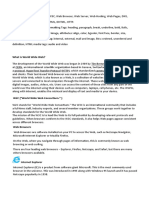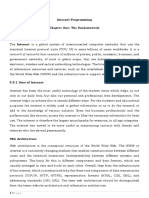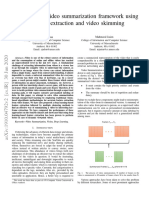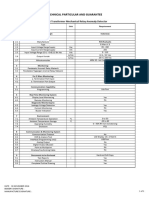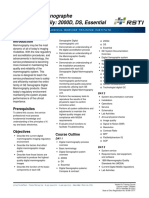0% found this document useful (0 votes)
20 views12 pagesUnit3 Netwrking
An IP address is a unique identifier for devices on the internet, assigned by ISPs, and can be either IPv4 or IPv6. IPv4 addresses are 32-bit and limited to 4 billion devices, while IPv6 addresses are 128-bit, allowing for a vastly larger number of unique addresses. The document also explains related concepts such as DNS, web pages, websites, web servers, and the roles of ISPs in providing internet access.
Uploaded by
sheetalthappa92Copyright
© © All Rights Reserved
We take content rights seriously. If you suspect this is your content, claim it here.
Available Formats
Download as DOCX, PDF, TXT or read online on Scribd
0% found this document useful (0 votes)
20 views12 pagesUnit3 Netwrking
An IP address is a unique identifier for devices on the internet, assigned by ISPs, and can be either IPv4 or IPv6. IPv4 addresses are 32-bit and limited to 4 billion devices, while IPv6 addresses are 128-bit, allowing for a vastly larger number of unique addresses. The document also explains related concepts such as DNS, web pages, websites, web servers, and the roles of ISPs in providing internet access.
Uploaded by
sheetalthappa92Copyright
© © All Rights Reserved
We take content rights seriously. If you suspect this is your content, claim it here.
Available Formats
Download as DOCX, PDF, TXT or read online on Scribd
/ 12





















